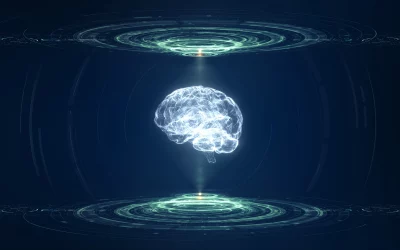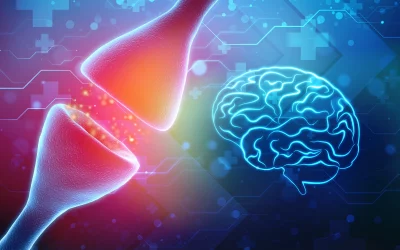CAR ACCIDENT-INDUCED CHIARI MALFORMATION INJURIES
A Chiari malformation is a birth defect that affects the brain. A structural deficiency in the lower-rear region of the brain called the cerebellum, also known as cerebellar ectopia or Arnold Chiari malformation, causes CM.
This is the portion of the brain that regulates equilibrium. A congenital abnormality is the most prevalent cause of CM. Experts were certain that the deformity could only be caused by events that occurred before and after birth.
However, some recent studies have shown a link between symptomatic CM and a stressful experience, such as a car accident or a slip-and-fall. In other words, a Chiari malformation might go unnoticed for an extended amount of time until a stressful event triggers it.
This is a shock to many accident patients since most people with an underlying Chiari malformation are completely unaware of it. Now, new evidence suggests trauma might exacerbate not only CM symptoms but also create deformity.
Free Consultation
In Person | Phone | Zoom
WHAT IS A CHIARI MALFORMATION, AND HOW DOES IT AFFECT YOU?
A Chiari malformation is a structural abnormality of the cerebellum, in this instance, an expansion. The cerebellum and the top section of the brain stem are normally housed in an indented region at the bottom back of the skull. A Chiari malformation occurs when a portion of the cerebellum is too big to fit into this space and starts to protrude below the aperture.
The bottom region of the cerebellum is termed the cerebellar tonsils, and the brain stem is pushed down into a location called the foramen magnum and into the upper spinal canal because the bony space is less than usual.
The pressure exerted on the cerebellum and brain stem may disrupt functions regulated by these regions and obstruct the passage of cerebrospinal fluid. The transparent liquid surrounding and cushions the brain and spinal cord is called cerebrospinal fluid, or CSF. This may have a significant impact on how the brain functions and the symptoms a patient feels.
SYMPTOMS OF A CHIARI MALFORMATION
Headaches, neck discomfort, numbness in the upper extremities, and paresthesia’s (pins and needles) are the most common Chiari malformation symptoms. Unsteadiness and balance difficulties are quite prevalent since the cerebellum governs balance in the brain. Similar symptoms, such as motor skills, coordination, weakness, and dizziness, may be present.
Other symptoms typically related to brain difficulties include trouble eating, speech impairments, visual problems, and irregular breathing in those suffering from CM. Of course, the severity of these symptoms varies from person to person.
Some people, as described before in this text, have no symptoms at all. Some people don’t realize they have a problem until they are adults. Others, on the other hand, do not have problems until they are exposed to trauma. But what about the trauma that caused the Chiari deformity in the first place?
CAN A TRAUMA CAUSE A CHIARI MALFORMATION?
Increased study into the etiology of Chiari malformations has yielded some intriguing discoveries in recent years. Chiari malformation was formerly a congenital condition produced by structural anomalies in the brain and spinal cord during fetal development.
However, a recent study has indicated that Chiari malformations may be linked to trauma, particularly whiplash.
According to many investigations, a previously undiscovered Chiari malformation may be symptomatically aroused as a consequence of damage produced by a motor car collision.
While these investigations found that head or neck trauma might induce symptoms related to Chiari malformation, Michael D. Freeman and a group of other specialists set out to address an even more fascinating question in a 2010 study: Could car accident trauma truly be the origin of a Chiari malformation?
THE ANSWER IS THAT IT IS VERY CERTAINLY FEASIBLE
Chiari malformation may be acquired later in life, i.e. it is non-congenital, according to established research. Lumbar shunting is a treatment that reduces cerebrospinal fluid CSF levels to relieve intracranial pressure in individuals with neurological problems.
Reduced CSF levels may sometimes cause the brain to sink into the base of the skull to the point where the cerebellum’s cerebellar tonsils push through the foramen magnum, resulting in a Chiari malformation. This happens because the quantity of CSF inside the spine and the brain’s dural covering affects the brain’s floatation level.
There is clinical evidence that dural leaks, which result in lower CSF levels, are linked to whiplash damage. This is conceivable because the whiplash causes lumbar shunting, which lowers CSF levels—the whiplash injury results in a dural leak, which leads to Chiari malformation.
CHIARI MALFORMATION IS A CONDITION IN WHICH A PERSON’S AFTER AN CAR ACCIDENT
Whether or whether a pre-existing asymptomatic Chiari malformation is triggered or caused by collision trauma, evidence shows that symptoms of Chiari malformations are much more common in whiplash-injured individuals. The key point here is that if you sustain head or neck trauma in an accident, particularly whiplash, you may get symptoms and other unanticipated difficulties, such as a Chiari malformation. The head jerks abruptly forward and backwards in a whiplash mechanism accident.
Acceleration-deceleration mechanism damage is what this is called. During such an event, the cerebellar tonsils might slip through the foramen magnum, a hole at the bottom of the skull, and into the upper region of the neck.
After evaluating 1200 cervical MRI scans, Professor Michael Freeman and Dr Ezriel Kornel released significant research in the Journal of Brain Surgery that established a link between acceleration-deceleration injury and symptomatic Chiari. The research shows that a pre-existing congenital Chiari commonly becomes symptomatic after a car accident.
CHIARI MALFORMATION DIAGNOSIS
Healthcare practitioners will use a set of medical imaging tests to diagnose a Chiari malformation. A doctor will arrange an MRI or a CT scan after analyzing your medical history and symptoms. Magnetic resonance imaging (MRI) is a kind of radiography that uses a machine that uses radio waves and magnets to make detailed pictures of the body’s interior.
One of the most popular and successful methods for identifying Chiari malformations is to use ultrasound. CT scans, or computed tomography scans, image the body using cross-sectional x-rays. These examinations take pictures of the skull to see whether the cerebellar tonsils have sunk into the base of the skull, obstructing the passage of cerebrospinal fluids and causing symptoms.
TAKING CARE OF A CHIARI MALFORMATION
The degree of a Chiari malformation and numerous key variables relating to the abnormality’s fundamental cause, whether it originated congenitally or after trauma, determine the therapy.
The most common treatment for a Chiari malformation is surgery, which tries to alleviate the pressure on the cerebellar tonsils, which inhibits the flow of cerebrospinal fluid and, if feasible, reverse the deformity’s growth. The stability or decrease of symptoms and the restoration of spinal fluid flow are common outcomes of successful therapy of Chiari malformations.
Posterior fossa decompression is the most frequent surgical therapy for Chiari malformations. The surgeon will remove a portion of bone from the back of your skull to alleviate pressure on your brain and allow it to expand. The dura mater, which covers your brain, maybe open up on occasion.
Occasionally, a patch will be applied to this aperture to assist relieve the strain on the cerebellum and brainstem, preventing the passage of cerebral spinal fluid. This patch might be made of tissue from another body region, or it could be made artificially. Another strategy a surgeon could take is to remove a tiny section of the spinal column to make room for the spinal cord and cerebrospinal fluid.
CHIARI MALFORMATION COMPLICATIONS
A Chiari malformation may deteriorate over time and lead to serious problems that are both damaging and disabling. Complications may arise due to variables related to the underlying cause, such as congenital deformity, or the disease may simply worsen on its own. The following are some of the most prevalent problems associated with Chiari malformations:
Spina Bifida is a condition in which the spinal cord has not fully formed and is exposed. The spinal cord’s covering may be left underdeveloped, allowing problems with the nerves in the spinal cord to cause paralysis.
Hydrocephalus is a condition in which fluid builds up within portions of the brain, impairing cognitive function. The cerebrospinal fluid would need to be diverted to another portion of the body by surgery in this situation.
Syringomyelia is a condition in which cavities or cysts occur in the spinal column. In type II Chiari malformations, this problem is more prevalent.
Tethered Cord Syndrome occurs when the spinal cord is tethered to the spine, causing it to stretch and suffer injury. This damages the nerves in the lower body severely.
SEEK THE ADVICE OF A SEASONED COLORADO CAR ACCIDENT LAWYER
Car-related injuries, especially brain and spine traumas, maybe highly serious. It’s critical to select a personal injury company with considerable expertise defending clients with severe or difficult injuries if you’ve suffered head or neck damage due to a car accident.
Several Chiari malformation cases have been retained by Jeremy D. Earle, JD and the Warrior Car Accident Lawyers team, including those recommended by other legal companies. Insurance companies sometimes depend on out-of-date research to portray such injuries as congenital, claiming that trauma had no impact on the pathology.
However, we are primarily concerned with the signs and absence of symptoms associated with Chiari before an injury. In other circumstances, we concentrate on an exacerbation or aggravation of a pre-existing injury in which the symptoms have been drastically changed as a consequence of a traumatic incident. There is still guilt if the accident caused or aggravated the symptoms.
In any case, pre-suit resolution of Chiari instances is uncommon. In most cases, a claimant is left with just one option: file a lawsuit. Expert testimony is common in Chiari instances, in our experience.
As a result, we often employ a radiologist, neurosurgeon, and epidemiologist to demonstrate the importance of this sort of harm and demonstrate that our client would not have arrived with such symptoms if the traumatic incident had not occurred.
Symptomatic Chiari is a highly dangerous disorder that often does not resolve without surgery. This often needs a craniotomy. A craniotomy is a very invasive treatment that has a variety of dangers. We must account for the possibility of future surgical intervention in persons with symptomatic Chiari because of their long-term prognosis.
If you have any questions concerning Chiari or whiplash, or if you’d like to talk about another sort of injury case, call us at 719-300-1100 or send us an email via our contact page.












